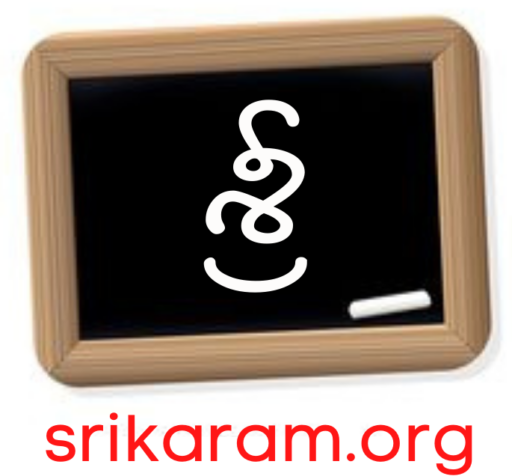Telugu and Hindi are two widely spoken languages in India, but they differ significantly in origin, script, phonetics, grammar, and cultural context. Telugu is a Dravidian language primarily spoken in southern India, while Hindi is an Indo-Aryan language predominantly spoken in northern India. This article delves into the fundamental differences between Telugu and Hindi.
1. Language Family and Origin
- Telugu:
Belongs to the Dravidian language family, which is native to southern India. Telugu has a rich literary history dating back to at least the 11th century CE. - Hindi:
Belongs to the Indo-Aryan branch of the Indo-European language family. Hindi evolved from Sanskrit through Prakrit and Apabhramsha languages and has been influenced heavily by Persian, Arabic, and Turkic languages.
2. Geographic Distribution and Speakers
- Telugu:
Spoken mainly in Andhra Pradesh and Telangana states, with over 80 million native speakers, making it one of India’s largest languages by number of speakers. - Hindi:
The most widely spoken language in India, official at the national level, with approximately 500 million speakers. Predominantly spoken in northern and central India.
3. Script and Writing System
- Telugu Script:
- Derived from the Brahmi script through Telugu-Kannada lineage.
- Uses a curvilinear, rounded script with 16 vowels and 36 consonants.
- Characters are generally rounded and ornate.
- Hindi Script (Devanagari):
- Derived from the ancient Brahmi script.
- Consists of 13 vowels and 33 consonants, written left to right.
- Has a distinctive horizontal line (shirorekha) that runs along the top of the letters.
- Letters have both simple and compound conjunct consonants.
4. Phonetics and Pronunciation
- Telugu:
- Rich vowel system with pure vowels.
- Includes aspirated and unaspirated consonants.
- Has retroflex and dental consonants.
- Generally melodic and rhythmic.
- Hindi:
- Wide range of vowels, including nasalized vowels.
- Distinguishes aspirated and unaspirated consonants clearly.
- Includes retroflex, dental, and alveolar consonants.
- Uses tones like nasalization (anusvara) and aspiration.
5. Grammar and Syntax
- Word Order:
Both languages primarily follow Subject-Object-Verb (SOV) order. - Nouns and Cases:
- Telugu uses postpositions and case suffixes to indicate grammatical relationships.
- Hindi uses postpositions (called vibhakti) as well, but with different case endings and particles.
- Verb Conjugation:
- Telugu verbs inflect for tense, mood, person, and gender with rich suffixes.
- Hindi verbs conjugate for tense, aspect, mood, person, gender, and number, often using auxiliary verbs.
- Gender:
- Telugu has three genders: masculine, feminine, and neuter.
- Hindi has two grammatical genders: masculine and feminine.
6. Vocabulary and Influences
- Telugu:
- Primarily Dravidian vocabulary with substantial Sanskrit influence.
- Uses Sanskrit-derived words extensively in formal and literary contexts.
- Hindi:
- Indo-Aryan vocabulary base with significant influence from Sanskrit, Persian, Arabic, and Turkic languages.
- Modern Hindi uses many loanwords from English.
7. Literary and Cultural Context
- Telugu Literature:
- Flourished from the 11th century onwards with poets like Nannaya, Tikkana, and Potana.
- Rich tradition of poetry, classical music, and dance (Kuchipudi).
- Hindi Literature:
- Rooted in medieval Bhakti and Sufi traditions, with poets like Kabir, Tulsidas, and Mirabai.
- Diverse modern literature including prose, poetry, and cinema (Bollywood).
8. Mutual Intelligibility
Telugu and Hindi are not mutually intelligible. A native speaker of one language generally cannot understand the other without prior study.
Summary Table
| Feature | Telugu | Hindi |
|---|---|---|
| Language Family | Dravidian | Indo-Aryan |
| Number of Speakers | ~80 million | ~500 million |
| Primary Regions | Andhra Pradesh, Telangana | Northern and Central India |
| Script | Telugu script (rounded) | Devanagari script (horizontal line) |
| Phonetics | Rich vowel system, melodic | Aspirated consonants, nasalized vowels |
| Grammar | Three genders, rich inflections | Two genders, auxiliary verbs |
| Vocabulary | Dravidian base with Sanskrit | Indo-Aryan base with Persian, Arabic, English influences |
| Literary History | From 11th century onwards | Medieval to modern literature |
| Mutual Intelligibility | No | No |
